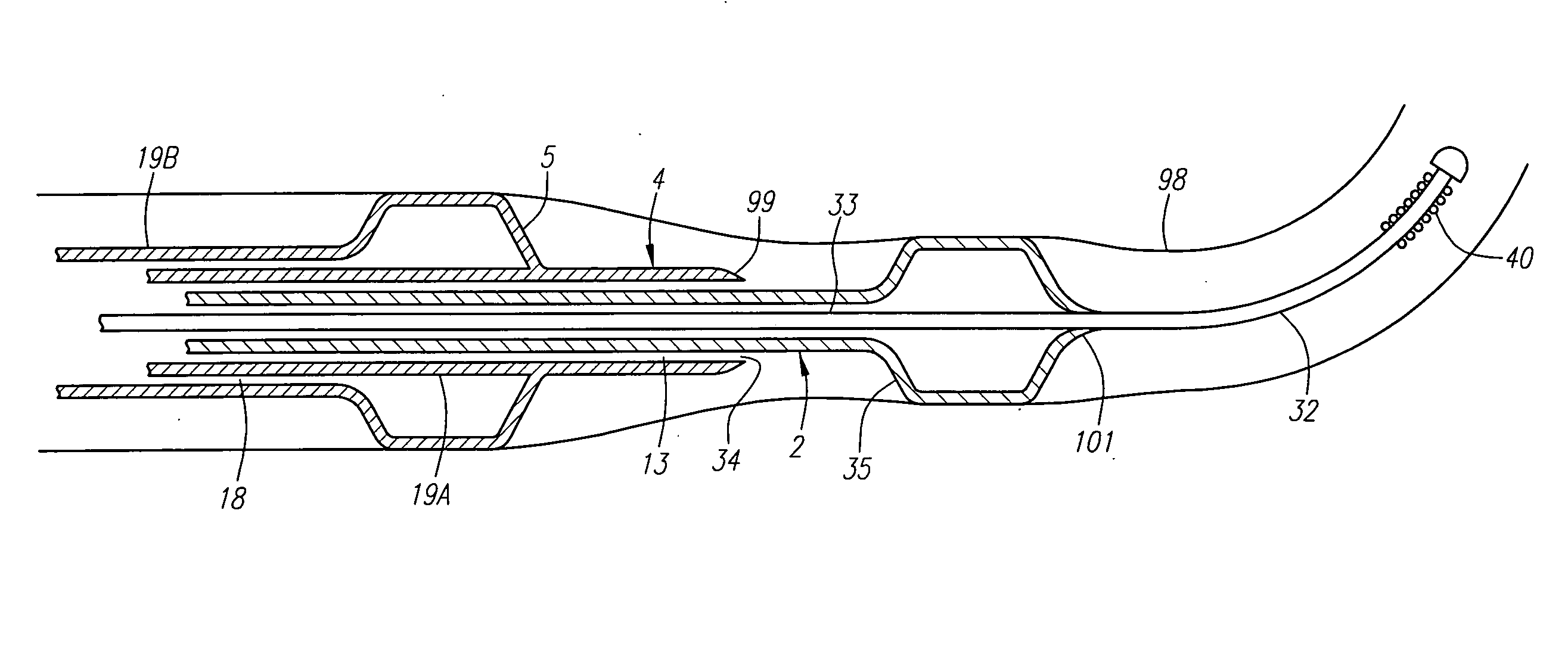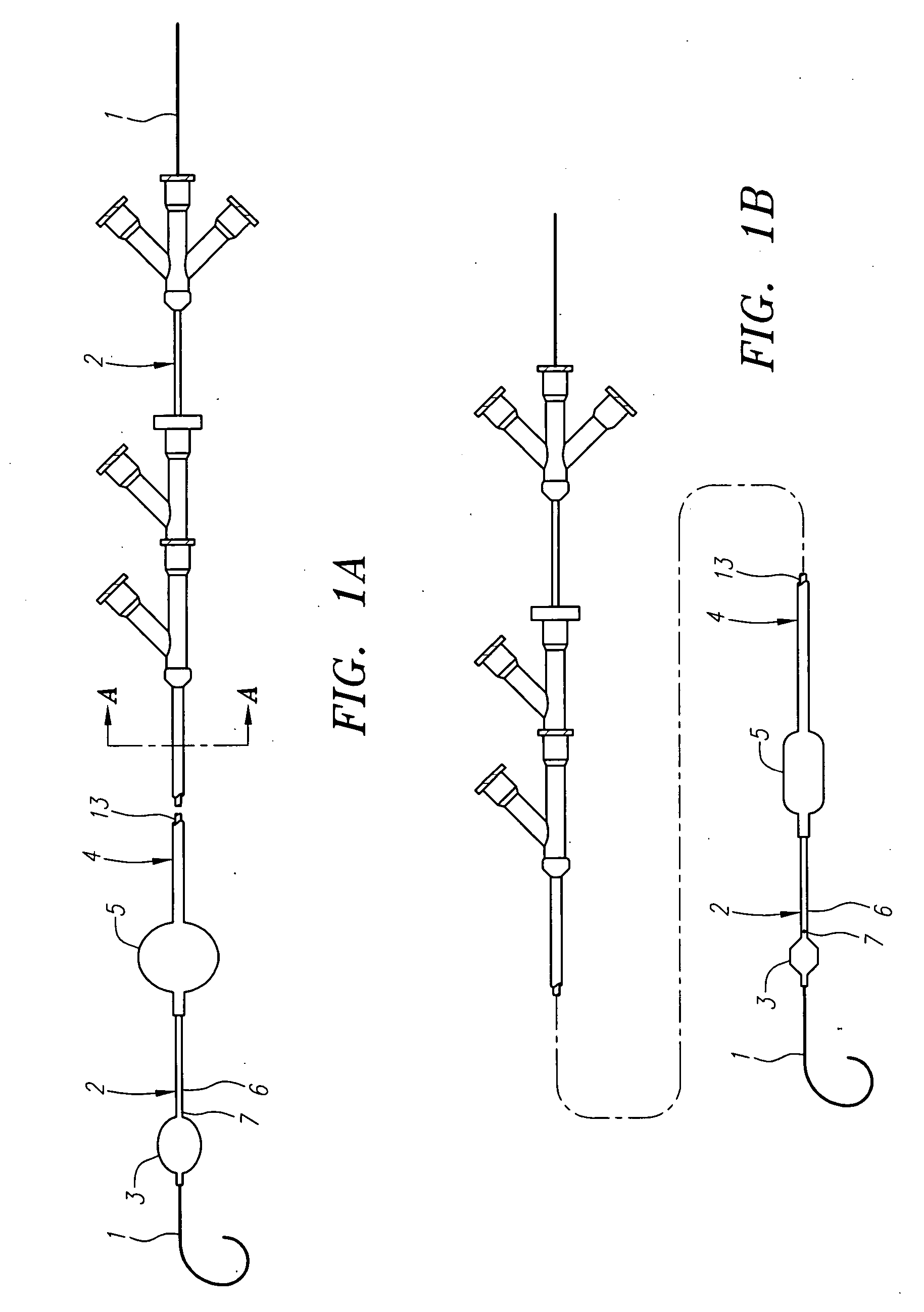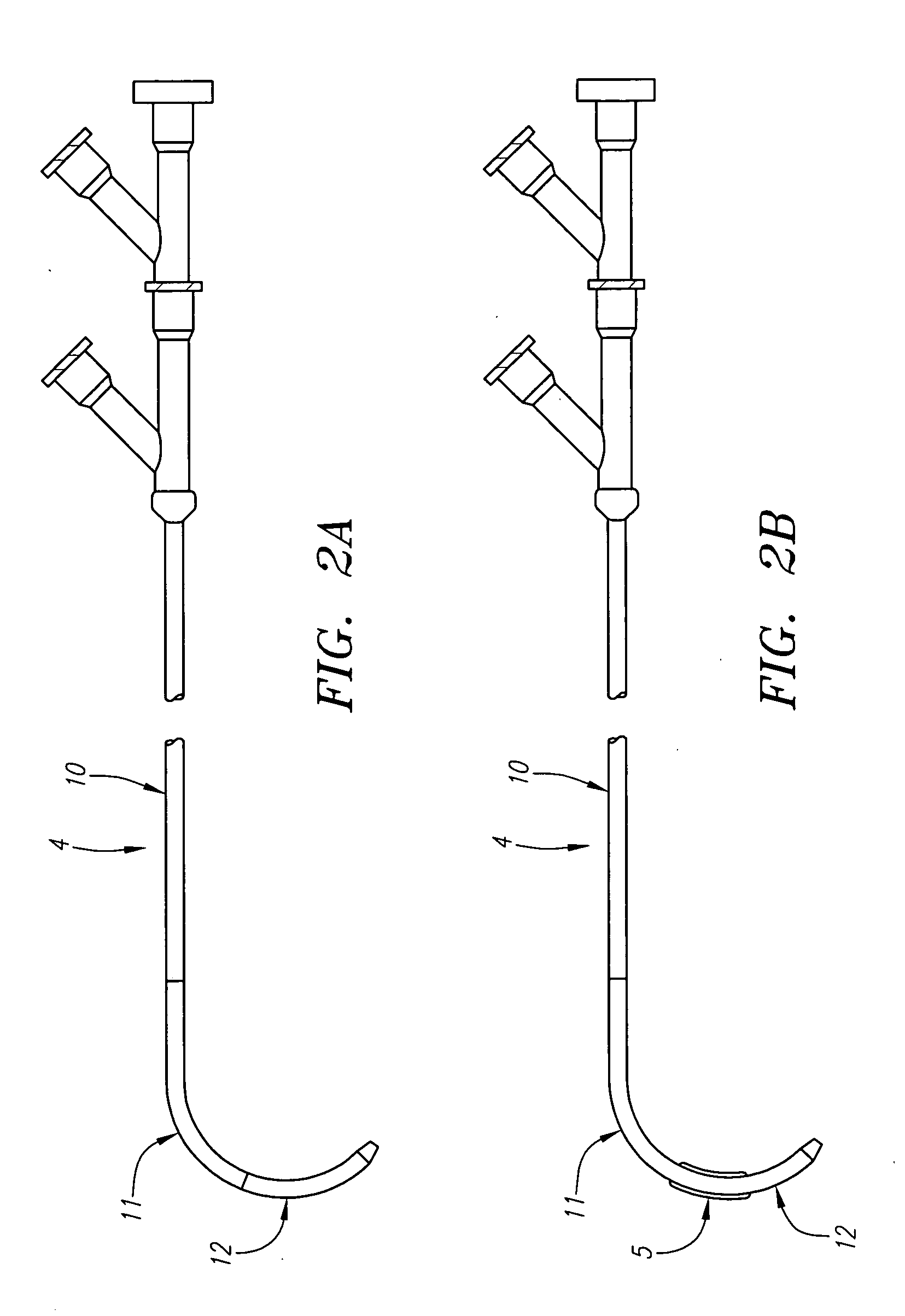Methods and apparatus for localized and semi-localized drug delivery
a technology of localized and semi-localized drugs and delivery methods, which is applied in the field of intravascular drug delivery, can solve the problems of not being useful to achieve the objectives of yock et al., and achieve the effects of convenient navigation, convenient turning into the coronary sinus, and convenient navigation
- Summary
- Abstract
- Description
- Claims
- Application Information
AI Technical Summary
Benefits of technology
Problems solved by technology
Method used
Image
Examples
Embodiment Construction
[0038] As can be seen from FIGS.1A-B, one example embodiment of the present invention comprises two catheters, each of which is provided with an occlusion device. The catheter system is constructed such that it can pass over guide wire 1. Inner catheter 2 carries distal occlusion device 3. Similarly, outer catheter 4 carries proximal occlusion device 5. One of skill in the art will readily recognize that any occlusion device can be used with the present invention and, accordingly, the present invention is not limited to any particular type or style of occlusion device. Here, occlusion devices 3 and 5 are balloons. Occlusion balloons can be shaped according to the needs of the application. In FIG. 1A, occlusion balloons 3 and 5 are spherical in shape, while in FIG. 1B, occlusion balloons 3 and 5 are cylindrical in shape. The cylindrical shape depicted in FIG. 1B is preferred in order to increase the surface area in contact between the balloons 3 and 5 and the vessel. The increased co...
PUM
 Login to View More
Login to View More Abstract
Description
Claims
Application Information
 Login to View More
Login to View More - R&D
- Intellectual Property
- Life Sciences
- Materials
- Tech Scout
- Unparalleled Data Quality
- Higher Quality Content
- 60% Fewer Hallucinations
Browse by: Latest US Patents, China's latest patents, Technical Efficacy Thesaurus, Application Domain, Technology Topic, Popular Technical Reports.
© 2025 PatSnap. All rights reserved.Legal|Privacy policy|Modern Slavery Act Transparency Statement|Sitemap|About US| Contact US: help@patsnap.com



